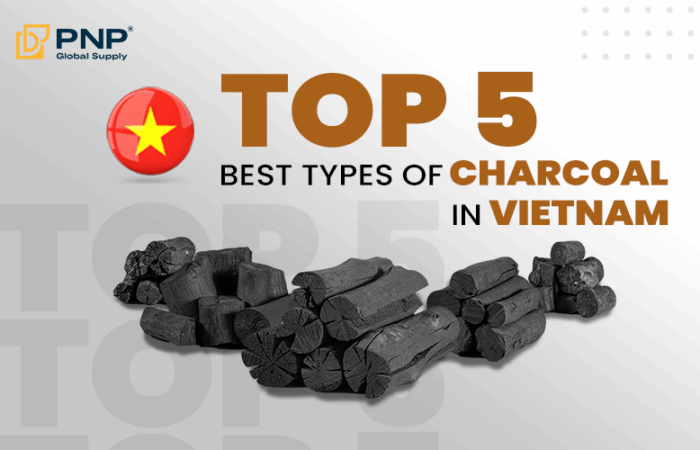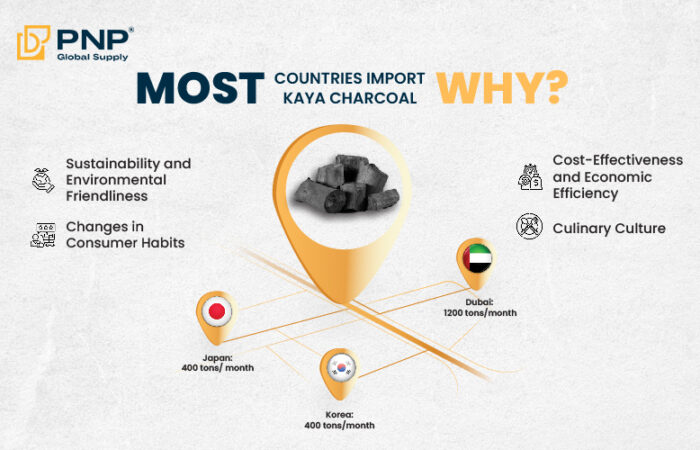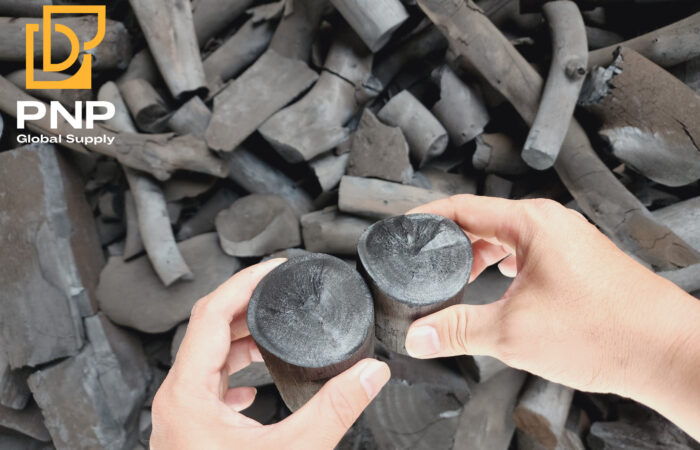Vietnam and Indonesia are among the leading charcoal exporters in the world, each of whom supplies different types of charcoal to the market. Understanding global customers’ difficulty in choosing which type of charcoal to import, PNP Charcoal will analyze the characteristics of Khaya charcoal and Halaban charcoal – the common charcoal of the 2 countries.
What is Khaya charcoal?
It is usually considered one of the top grilling charcoal in the market. It is made from dense and hard Khaya wood, thereby, can provide strong and steady heat for a long time. These qualities have made it an ideal grilling charcoal type in many markets, especially in the Middle East.
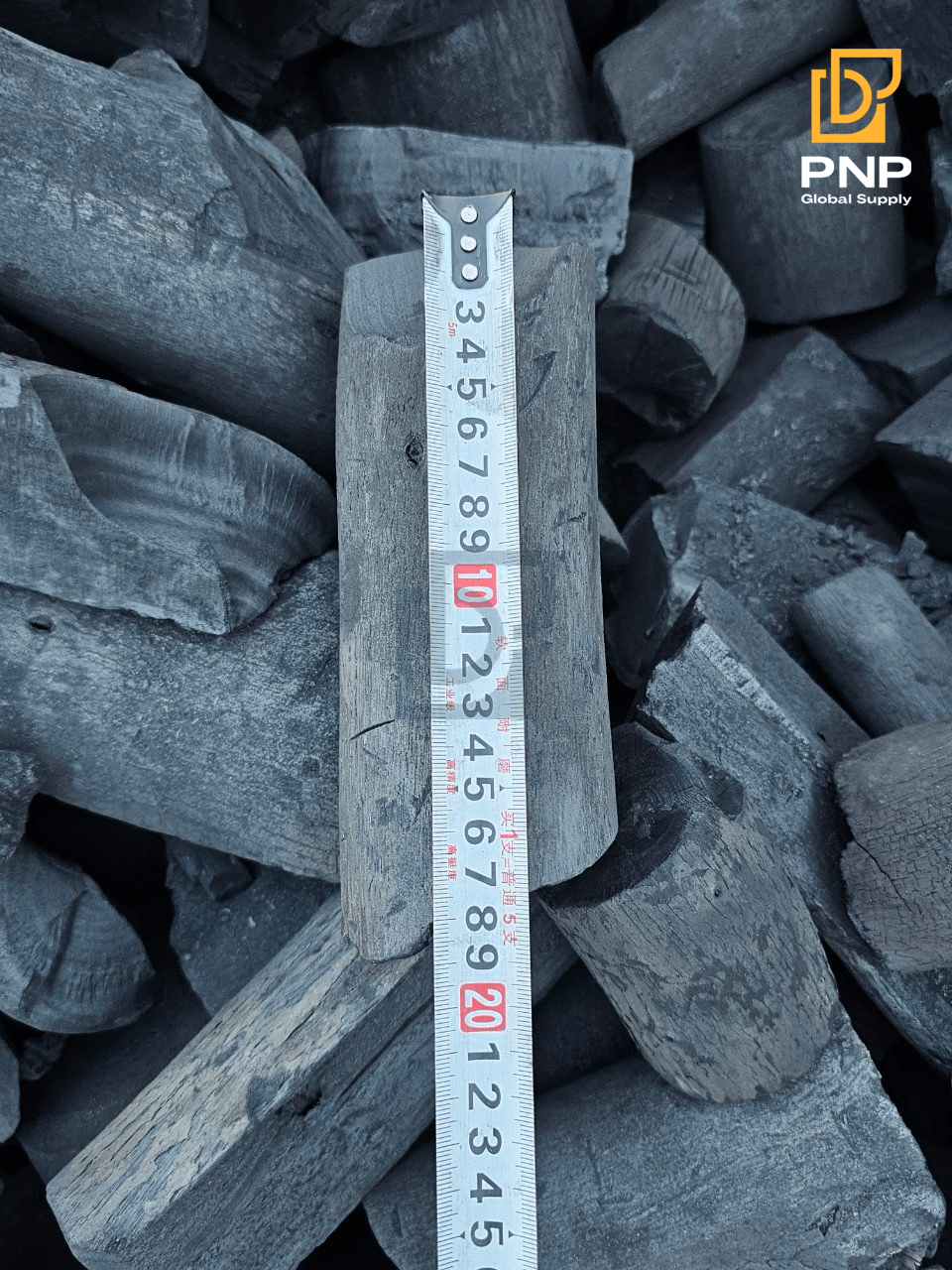
How to produce Khaya charcoal
The technique to produce this type of charcoal is quite similar to other wood charcoal production processes. There are 3 main steps: materials preparation, carbonization, and customized packing. Check out our real charcoal production videos here!
The benefits of using Khaya charcoal
For grillers who love to spend a whole afternoon grilling and chilling, this type of charcoal is the perfect choice! Since this charcoal can burn steadily for 4 – 5 hours, it is suitable for long BBQ sessions. Considering customers nowadays prioritize convenience more than ever, a charcoal product that can burn for a long time and does not need changing too many times is a plus all buyers should consider!
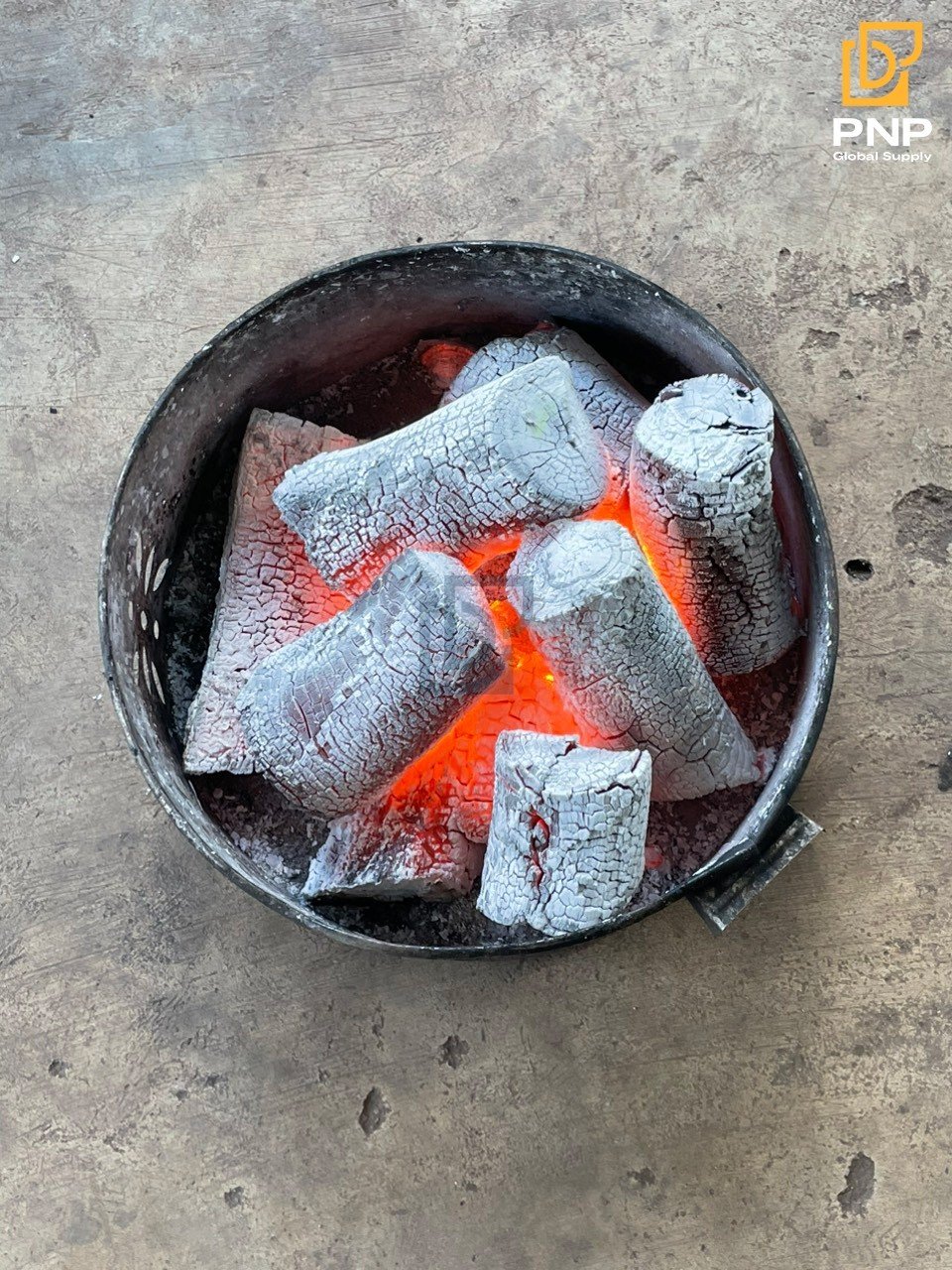
Made from dense Khaya wood, it is also ‘’blessed’’ with the ability to reduce smoke and odor. This is due to the moisture content in each type of charcoal. Its moisture content is only 3.9%, indicating its ability to produce a limited amount of smoke and odor. On top of that, the ash content it produces is 2.1%, saving customers a lot of time in cleaning afterward.
What is Halaban charcoal?
It is a very popular type of wood charcoal in the Indonesian market. It is made from the Halaban tree, originating from Indonesia. Halaban wood is known for its dense and sturdy features, making it suitable for making charcoal.
How to produce Halaban charcoal
The process to produce Halaban charcoal is not different from the Khaya charcoal production procedure. It also includes 3 main steps, from cutting the raw materials to burning the charcoal, and ends with cutting and packing charcoal for the customers.
The benefits of using Halaban charcoal
Halaban charcoal can burn for 3 – 4 hours, an average burning time but less than that of Khaya charcoal. A plus point of this charcoal is that it also produces less smoke and less odor, creating a clean grilling experience.

Which type of charcoal is better?
Overall, these 2 types of charcoal share some similarities such as producing only a small amount of ash and being made by hardwood. However, considering the specification of 2 charcoal types, we can see that Khaya charcoal completely outweighs Halaban charcoal in terms of burning hours.
Regarding calorific value, this figure indicates how effectively a specific charcoal product burns. In this case, Khaya charcoal has a higher calorific value compared to that of Halaban charcoal. It means that Khaya charcoal releases more heat while burning, helping customers cook food quicker and more efficiently.
Another figure we should notice is the moisture content. For charcoal, the lower the moisture content, the better, because it will directly affect the charcoal’s ability to burn effectively. Again, it proves the ability to burn more effectively compared to Halaban charcoal.
| Characteristics | Khaya charcoal | Halaban charcoal |
| Wood type | Hardwood | |
| Burning time | 13.5 hours | 3 – 4 hours |
| Fixed carbon content | 68.8% | 63.8 % |
| Moisture content | 3.9% | 6.1 % |
| Calorific value | 7349 kcal/kg | 6500 kcal/kg |
| Ash content | 2.1% | 2% |
| Volatile matter content | 27.0% | 29.1 % |
Where to find a credible Khaya charcoal supplier in Vietnam?
PNP hopes with our analysis, buyers can have a better understanding of the 2 types of charcoal: Khaya charcoal and Halaban charcoal . If you are interested in experiencing Khaya charcoal, PNP Charcoal is the perfect choice. We can offer you a free Khaya charcoal sample, or even support you in visiting our charcoal factory in Hau Giang and Binh Phuoc. Just contact us via this link!
________________________________
Contact us for more information
Facebook: PNP Charcoal
Instagram: PNP Charcoal
Email: info@pnpglobalsupply.com

